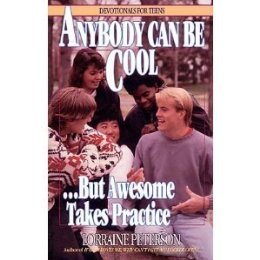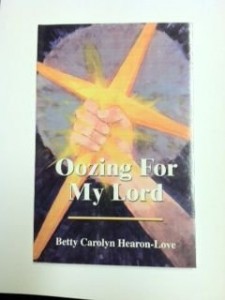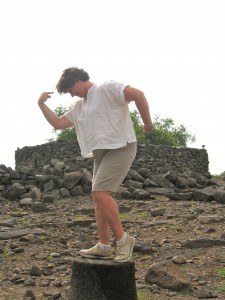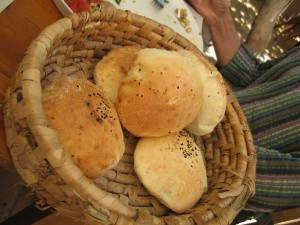Category: Uncategorized
I read a blog last week about the differences between today’s printed books, and those of yesteryear. One of the biggest changes was that contemporary readers expect more white space, whereas our ancestors were comfortable with word atop paragraph running into page becoming chapter.
 The blog continued by examining the need for mental white space, making me contemplate how I cleared my mind when I’ve been writing too long. Extended periods at the keyboard tend to embed me so thoroughly and deeply in my story and characters that I lose a reader’s more distant perspective. The resulting, somewhat myopic copy becomes too dense, or assumes readers know more than they do about what’s going on. So how do I avoid this self-defeating (and unprofessional) problem?
The blog continued by examining the need for mental white space, making me contemplate how I cleared my mind when I’ve been writing too long. Extended periods at the keyboard tend to embed me so thoroughly and deeply in my story and characters that I lose a reader’s more distant perspective. The resulting, somewhat myopic copy becomes too dense, or assumes readers know more than they do about what’s going on. So how do I avoid this self-defeating (and unprofessional) problem?
Take a hike. I do something physical. Walk to the top of my hill (no small feat in the Rocky Mountains). Endure 15-minute bursts on the treadmill. Anything that makes my blood pump is good for writing, and the monotonous movement of a treadmill triggers clear, crisp dialogue and plotting. If I’ve really hit a snag during winter, I’ll cross-country ski. (I’m afraid I’m that batty old woman thrusting along, muttering to herself, trying not to slide into the frozen creek…)
Read a chapter by a favorite author. Nothing reminds me more of what really good writing looks like than works by my favorite authors. I usually have a couple of their books on the end of the desk, reminding me to be my best. A chapter or two pulls my mind far from my story so I return refreshed and energized.
Brew a cup of tea (or coffee). I know this is ridiculous, but there’s something refreshing about the process. Add a cookie (do I even need a reason?), and I’ve invested ten minutes in a caffeinated change of scenery.
Know when to take a day off. I hate this solution, but sometimes I need to step away from my story. Way away from it. I work ahead, and am maniacally disciplined, so almost always have buffers in my schedule. But when I’m bogged down, or the story is murky, I force myself to completely ignore the writing files for twenty-four hours.
Send two or three chapters to a friend. I hope you have a trusted proofer—someone who knows you and your work, is widely read, and reads in your genre. He or she can be the most valuable asset during the drafting process. When you’re lost in your document, this ally might be your manuscript’s salvation. I don’t hesitate to place the call when everything else fails.
How do you create mental white space? I’d love to hear from you.
In twenty-five years of marketing, the two toughest items I produced were billboard copy and photo captions. I’ve now discovered their literary equivalents: book titles and cover copy. These tiny, critical windows are the most-important point-of-purchase components of book sales. So how does an author create compelling book-marketing bits and pieces? Here are a few ideas.
 YOUR BOOK TITLE — Billboards are the “three-second read” in advertising. Drivers glance, absorb four or five words, and either ignore the (very-expensive) board, or act later because something stuck in their minds. Your manuscript title is a literary billboard. How does it perform in the following criteria?
YOUR BOOK TITLE — Billboards are the “three-second read” in advertising. Drivers glance, absorb four or five words, and either ignore the (very-expensive) board, or act later because something stuck in their minds. Your manuscript title is a literary billboard. How does it perform in the following criteria?
- Is every word familiar? Use the simplest English words you can, and replace all but very common foreign words. In Friedman’s The Aleppo Codex, anyone paying attention to Syria’s civil war will immediately pick up the book. Regarding The History of the Arab People by Hourani, his foreign name lends credibility. (These are AWESOME books.)
- Is your title evocative and powerful? Barbery’s The Elegance of the Hedgehog is a great example of an intriguing title. John Le Carre’s A Delicate Truth is another interesting option. I like juxtapositions in titles, or plays on words. But remember, the shorter the better!
- Is your title different? Again, refer to Barbery’s recent work. When did you last see hedgehog on a book cover? Or delicate in the title of a work of suspense, a la Le Carre?
- Does your title convey the essence of what you’re doing? Sometimes I create great titles—but they don’t match my work. Usually the “perfect” title floats from my subconscious. Keep at it until your title is relevant, and consistent with your story. Creating a title is all about condensing.

COVER COPY — Once your title is strong enough to rise from the sea of recent releases, address cover copy. The title and graphics trigger a person to consider the book. But the “sell” comes with the cover copy. Don’t underestimate the importance of this short blurb, which must be perfect.
- How powerful are your words? Look at cover copy from books by favorite writers. They use strong words “indigenous” to the genre. Sentences are crisp. Lean. Study every individual word, and surgically lace them together. Be precise.
- Does this copy convey the gist of your story? Cover copy can be well-written, but a literary rabbit trail. Share enough to trigger a purchase, but not too much. Write in a style consistent with your manuscript, because cover copy should be a sneak preview of what’s to come.
- Does your cover seduce your reader? Cover copy is the come-hither phase of your literary relationship with a potential reader. Be your best, stay true to yourself, and represent your genre well. If you write suspense, be suspenseful. If you write romance, be romantic. If you write horror…well, just don’t get arrested.
Lastly, be prepared for all of this to change if your publisher decides to reposition your work. What is your experience with book titles and cover copy? Do you have suggestions? I’m interested!
(cover art courtesy of amazon.com
I’ve tried NOT to write this blog for a week, but I have to do it. Before I launch, let’s address some facts confirmed by Egyptian government and international media sources, including The Washington Post (http://wapo.st/hvQ55D).
- Tourism makes up 11 percent of Egypt’s economy. In resorts, the percentage is exponentially higher.
- The loss in tourist dollars since Arab Spring is estimated at 1.5 billion annually.
- As Egyptians celebrated freedom from the Muslim Brotherhood, between 91 and 189 women were raped in the streets by men jubilant about “liberty.”
What’s wrong with this picture? Everything.
This is about rights. Simple ones. The right to walk a street. The right to celebrate a victory for humankind. The right to personal safety. The right to be female. The right to a career. (Three Western reporters have been publicly assaulted since Arab Spring “blossomed.”) On a related note, the first “non-white”—The London Telegraph’s term, not mine—Anglican Bishop, Michael Nazir-Ali, says (http://bit.ly/12PLL2I) what’s needed isn’t majority rule, but a Bill of Rights. I pray it covers women, and not just men, and is strictly and heinously enforceable.
 THESE ARE MY RIGHTS—and yours. MY daughter and granddaughter’s. YOUR sister and sister-in-law’s. OUR mother’s. This is not about Muslims, Christians, Jews, or any other religion: rapes are crimes committed by people practicing all beliefs. This is about the gift of being fully HUMAN.
THESE ARE MY RIGHTS—and yours. MY daughter and granddaughter’s. YOUR sister and sister-in-law’s. OUR mother’s. This is not about Muslims, Christians, Jews, or any other religion: rapes are crimes committed by people practicing all beliefs. This is about the gift of being fully HUMAN.
As we pat ourselves on the back about the success of a military overthrow, ask yourself if it’s going to truly make a difference if animals celebrating in Tahrir Square aren’t any better than the Brotherhood they’ve ousted. This region isn’t a poster child for human rights, most particularly if one lacks the Y chromosome. As of now, the military, Morsi’s government, and a percentage of male Egyptians look identical, are equally disgusting, and alarming as hell.
But the patriarchal West looks more kindly on a government that spews placating rhetoric than it did on the most-recent one destined to topple the region. As for me and mine, Egypt remains a “no-go zone” until the two-legged animals are secured in the Giza Zoo. I believe in voting with my dollars, which won’t be spent in Egypt.
It’s time for Egyptians to protect their women, and salvage their international reputation while they still can.
This blog is the second of two. It provides suggestions about writing from memories of a trip you took before knowing you’d be using that travel as a basis for a manuscript. (It’s not an ideal situation, but it happens.) The previous blog, Know Before You Go (http://bit.ly/12A5oYb), covered writing after a research-specific trip.

My first manuscript emerged from a long archaeological survey of Israel and Jordan. My time there was such a mind-blowing experience that ideas, environment, and magnitude of everything I saw, felt, and believed needed to gestate before I could do it justice. I’ll return Spring 2014 to revisit sites, and will then revise my work if necessary.
Fortunately, I kept an extensive journal of the trip, including shots best not shared (such as the one to the left, atop a basalt pillar on the shores of the Dea of Galilee). I also have a dozen atlases of varying types and ages; photographic journals; reams of notes; and a masters degree from seminary covering roughly ten thousand years of history to provide an infrastructure for my memories.
When I drafted the first manuscript, two years after returning to the States, the following elements helped me construct the story from memory, and I recommend them to you.

- Stay up to date on current events. If I had traveled to Syria (I weep for Damascus), my memories would be totally inaccurate after the ongoing, heinous civil war.
- Do rely on Google Earth to confirm what appears in your mind’s eye. And search images on the net, paying special attention to dates to ensure they’re current depictions.
- Think about your adventure. Don’t be afraid to sit at your desk, close your eyes, and picture what you saw. Your writing will be more believable, and your reader will benefit from your attention to detail.
- Did you smell cumin at Haret J’doudna in Madaba, Jordan? Or pita fresh from the oven? Was the wind gentle or fierce when you crossed the pedestrian Pont des Arts bridging the Seine in Paris? While you’re at it, what was curious about the bridge? (The answer is, “padlocks.”) Strive to remember the small things.
- Talk to your travel mates if you weren’t traveling solo. Their perceptions probably differ from yours, or their comments might trigger long-forgotten memories. This is a case where more is better, and I rely heavily on family members who journey with me.
- Plunder their photographic archives. (I seriously hope you take a lot of photos when you travel. Since we’re not tied to film anymore, and digital shots are easily erased, fill multiple memory cards!) Not only will your photos jog your mind, but they’re great to have for marketing later.
With preparation, research, and determination, you can craft convincing settings for your work. Do you have any suggestions about how to write from memory? Remember, I’m interested!
Every time I write, I think about how fortunate I am to be an American. My ancestors immigrated from Scotland and Ireland early in America’s life. I owe them gratitude for that rough transatlantic crossing.
I appreciate my education. The gift of choosing a career. Freedom to build a life anywhere I have the ability and means to build it. Privilege of walking down a street in relative safety.
These treasures are part of my citizenship, something I hold more dearly with each passing revolution, war, and uprising around the globe.
Happy Independence Day! Long may she wave.
 The blog continued by examining the need for mental white space, making me contemplate how I cleared my mind when I’ve been writing too long. Extended periods at the keyboard tend to embed me so thoroughly and deeply in my story and characters that I lose a reader’s more distant perspective. The resulting, somewhat myopic copy becomes too dense, or assumes readers know more than they do about what’s going on. So how do I avoid this self-defeating (and unprofessional) problem?
The blog continued by examining the need for mental white space, making me contemplate how I cleared my mind when I’ve been writing too long. Extended periods at the keyboard tend to embed me so thoroughly and deeply in my story and characters that I lose a reader’s more distant perspective. The resulting, somewhat myopic copy becomes too dense, or assumes readers know more than they do about what’s going on. So how do I avoid this self-defeating (and unprofessional) problem?




